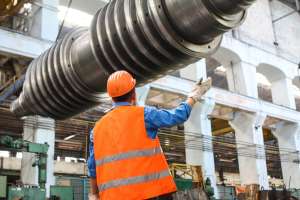Sustainability aims to fulfill the needs for infrastructure, working environments, and housing without jeopardizing future generations to satisfy their needs.
When it comes to construction, buildings can contribute more sustainability by introducing intuitive technologies. As such it helps to secure long-term economic, viability, and environmental challenges.
Sustainable construction technologies involve material performance, resource, and energy efficiency, management and designing of buildings, maintenance and operation, and safe working conditions.
In short, sustainable construction technologies attempt to reduce excess, create accountability, and protect the environment. Here are some technologies for sustainable construction in the future.
1. Solar power.
It is one of the greatest sustainable construction technologies that is frequently used in recent years and will continue to remain the same. Solar power doesn’t require a lot of equipment. There are two types of solar power: active and passive solar power. Active solar power is what you think when it is about solar energy.
And, the passive one is designed for smart homes instead of advanced technology. Active solar systems provide more heat compared to passive ones. The more solar energy is utilized, the fewer will be the impact of greenhouse gases that are produced from non-renewable energy sources.
2. Biodegradable substances.
The utilization of biodegradable materials is an eco-friendly means of making construction sites more sustainable. Most of the conventional methods used in construction result in the buildup of waste products that are toxic as well.
Moreover, it takes hundreds of years for those substances to deteriorate and hampers the environment to a great extent. Even if they degenerate, it cripples and contaminates the environment at large.
3. Rammed earth brick
It is an ancient construction technology that has been lately re-introduced to serve the demands of a sustainable environment. Rammed earth uses raw materials to build sturdy buildings by following the simple procedure. Even the Great Wall of China was built using the rammed earth technology.
A mixture of hard substances such as gravel or clay and earth are combined with stabilizing elements like concrete to form a compressed and dense wall. However, after its construction, the rammed earth should cure for a few months or even a year. It requires a humid climate to cure and become hardened completely.
4. Cool roofs.
Specifically designed to increase the efficacy of solar reflectance and reduce thermal emittance, cool roofs are the latest addition in construction. In short, the cool roofs reflect more of the sun’s rays compared to an average roof. Also, it helps prevent the cool and warm air present inside the house from escaping the building.
Hence, cool roofs are sustainable technologies that work by reflecting sunlight and heat elsewhere. Moreover, it helps maintain buildings and homes at normal room temperatures by reducing heat absorption. This is indeed one of the sustainable technologies that will be seen everywhere in the future.
5. Green insulation.
Green insulation has shown impressive results because it helps reduce the need for high-end and non-renewable materials. As a result, it has been widely accepted as the new sustainable technology that brings a revolution at construction sites.
With the help of green insulation, one can utilize the used and past materials such as paper and denim. Cotton and cellulose are the preferred choices when it comes to green insulation.
Apart from that, it doesn’t pose health issues or discomfort like you get from fiberglass.
6. Electrochromic smart glass.
Whether it is a traffic cone or drones, the latest developments in technologies have made construction sites secure more than they used to be in a few years back. However, not all technologies to be used in construction are sustainable. But Electrochromic smart glass is one of the latest innovations that contribute more to sustainable construction.
This device works great especially on summer days when there are lots of solar emissions. The glass makes good use of the electric signals that charge the windows and adjusts the amount of solar radiation that it returns.
7. Water power technologies.
With the advent of science, water technologies have made significant improvements and are considered as a part of sustainable construction technologies.
So, what it does is incorporate re-using and applying adequate water supply systems. Some great examples include the use of rainwater harvesting, dual plumbing, water conservation installations, and re-using greywater.











